ZHAOXING VILLAGE: THE HEART OF DONG ETHNIC MINORITY
A visit to Guizhou and its ethnic minority groups would not be complete without a stop in Zhaoxing Dong village (肇兴乡) and it’s surrounding countryside. Zhaoxing is indeed one of the best places to experience the lifestyle of the Dong People, which is one of the officially recognized ethnic groups of China.
The village is located in the Qiandongnan Miao and Dong Autonomous Prefecture in west Guizhou Province, surrounded by rice paddies and lush forests, crossed by the Nanjing River.
Today over 4,000 people live in the village, making Zhaoxing one of the biggest settlements of the Dong Ethnic Minority people.

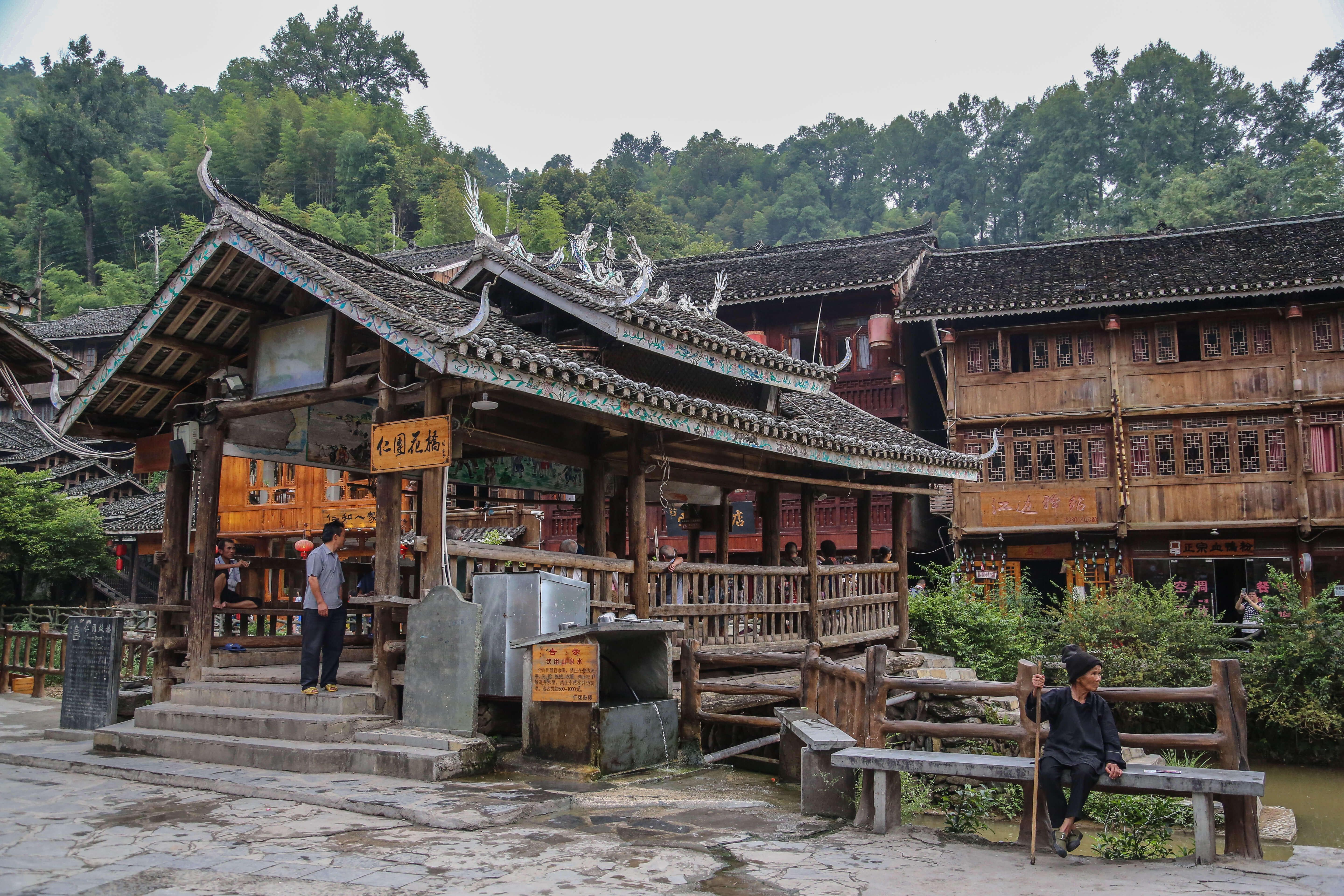
WHO ARE THE DONG PEOPLE?
The Dong are one of the 56 recognized Ethnic Minority Groups of China, accounting for almost 3 million people. They mostly live throughout the sprawling hills of Guizhou, Hunan and Guanxi Provinces in the South of China. The villages are nestled between terraced hills and rivers, as they are mainly farmers.
The Dong Ethnic Minority group speaks its own language (Kam, a Sino-Tibetan dialect), which did not have a written form until the 50’s. Because their language was only spoken for centuries, the Dong always had a very strong tradition of singing and playing music.
Their songs served as a record to preserve their cultural heritage and remember their history.
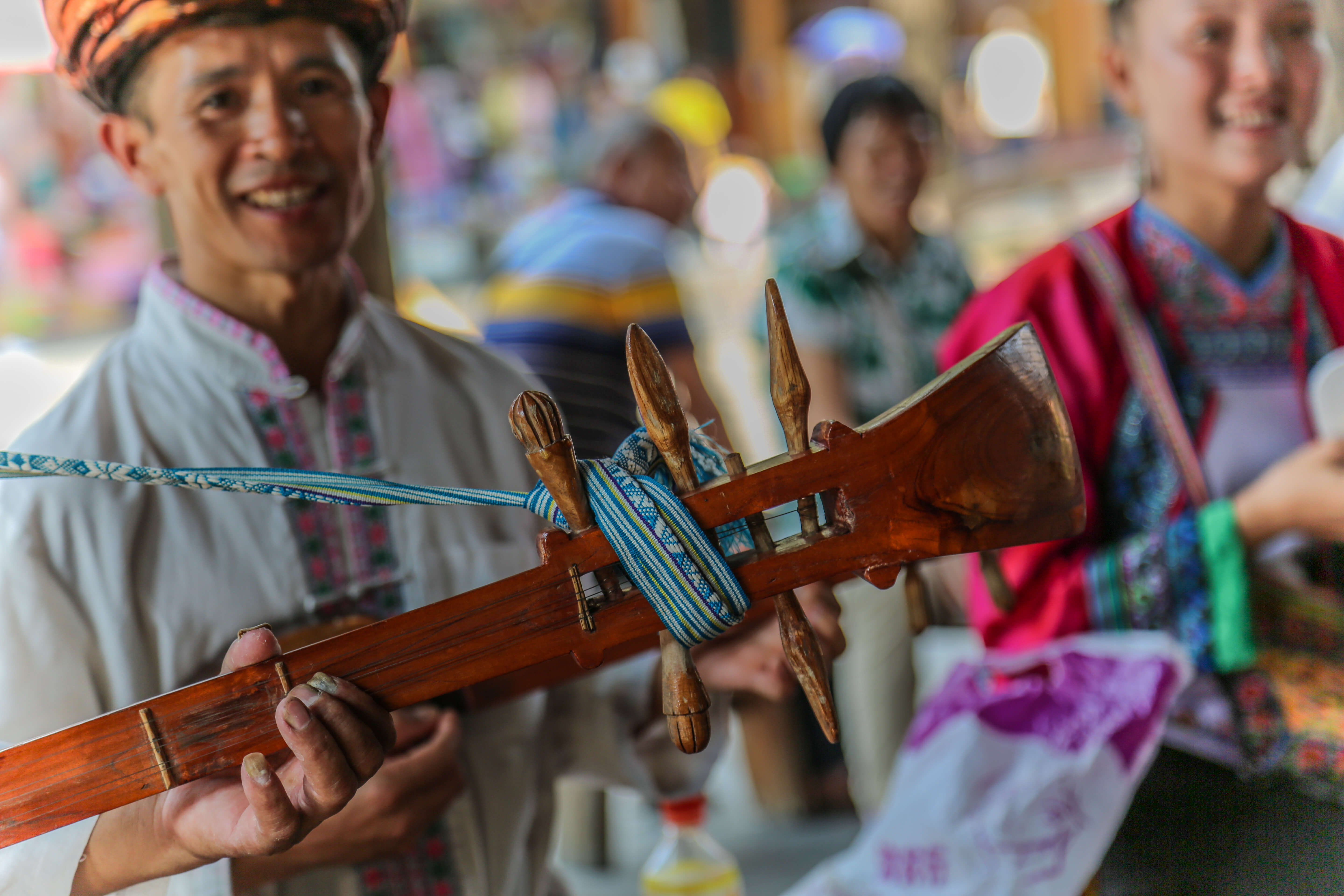
Another important feature of the Dong culture is their traditional clothes that showcase unique designs and patterns. Weaving, embroidering, and dying is part of the cultural cloth of the Dong people. In fact they usually hand made their vests, considering it a fundamental skill in every Dong woman’s life.
It’s very common to encounter women dying their fabrics in indigo or purple colors while strolling around a Dong village. Many of them sell their colorful, intricate embroideries and hand made batik pieces.


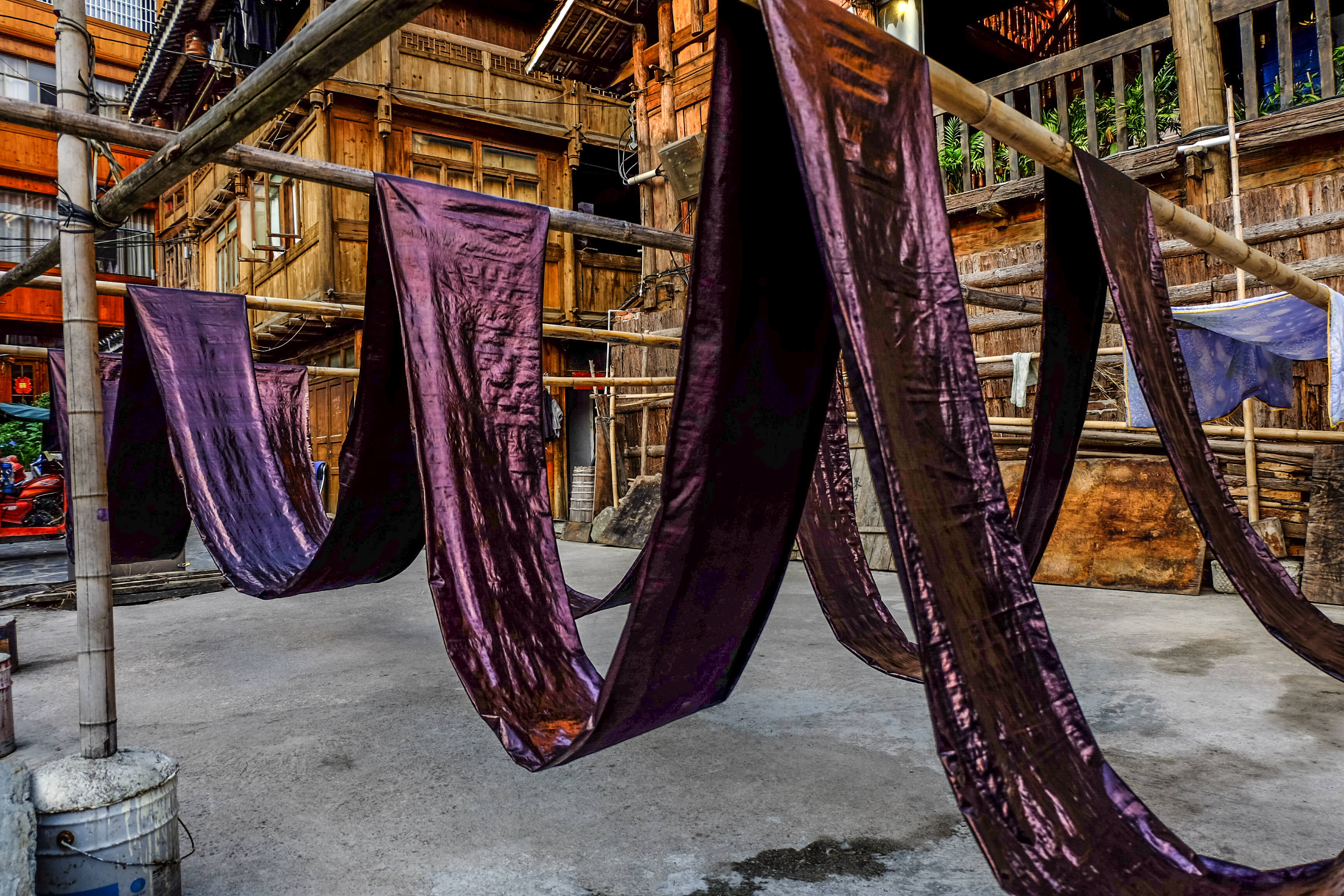
DONG TRADITIONAL ARCHITECTURE
One of the most fascinating aspects of the Dong Minority is its traditional architecture. The Dong villages are mostly built in valleys and terraced hills, made up of dozens (up to hundreds in the biggest villages like Zhaoxing) of wooden dwellings.
The most remarkable typologies of the Dong vernacular architecture are the Drum Towers and the covered bridges (fengyuqiao, literally ‘wind and rain bridges’).
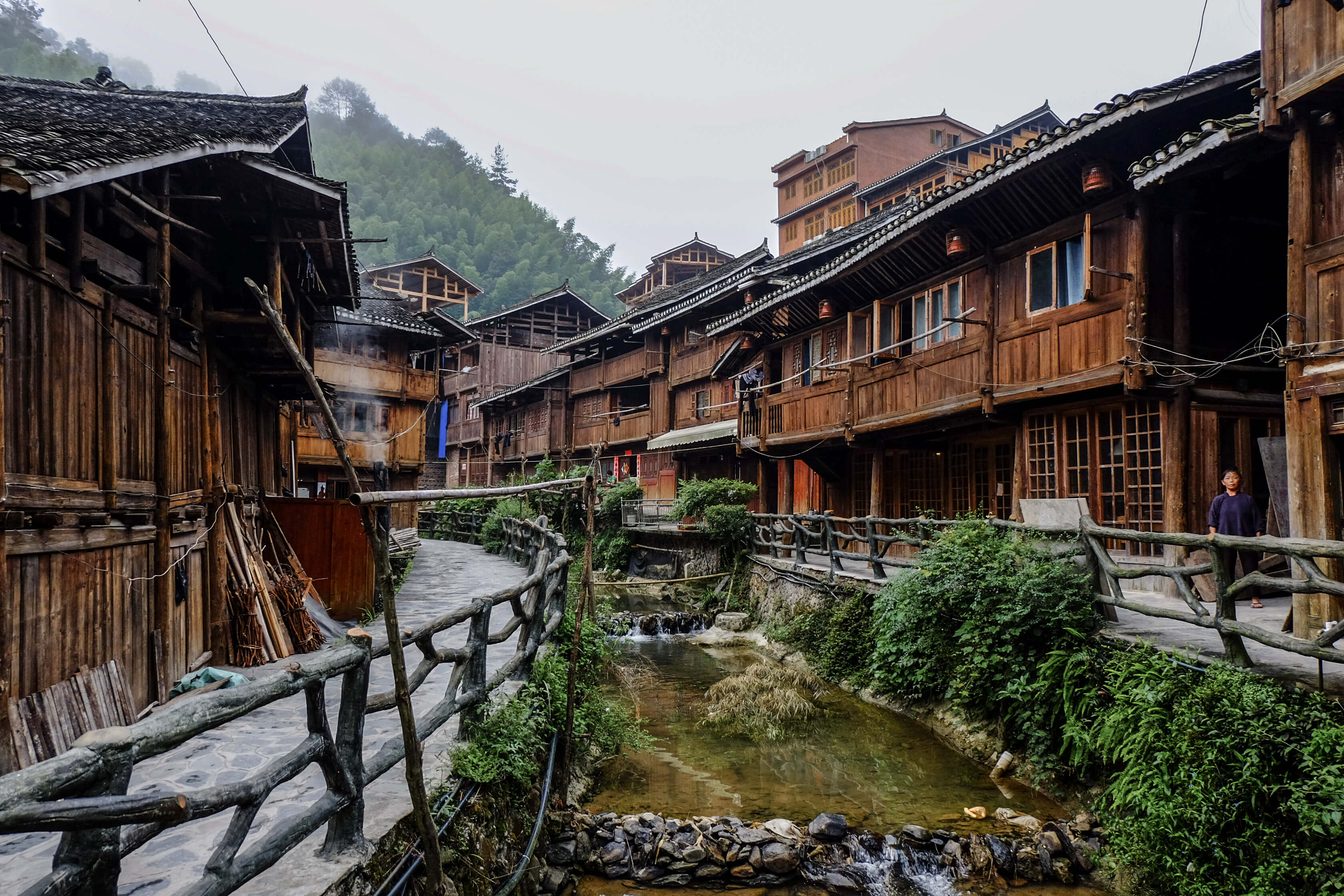




DONG DRUM TOWERS
The drum towers are a fundamental feature of every Dong village, and it is possible to find several of them in the same village. A Drum Tower represents the center of the village and the community .
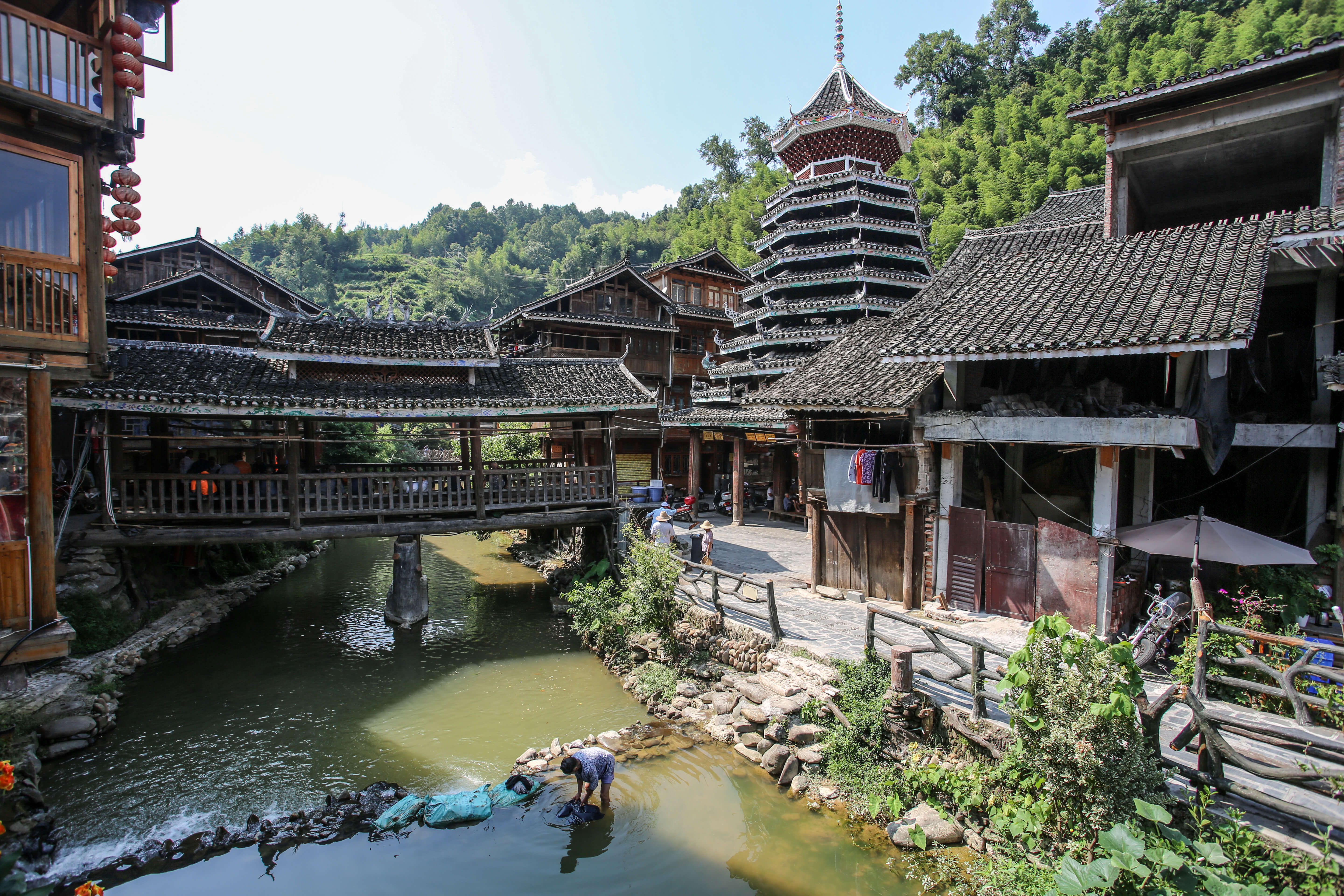

Years ago, it was the place used to solve disputes, while nowadays the people hold meetings and gather for social activities and events. Similar to a village square, it is a communal space to meet and socialize with the other villagers. This unique kind of pyramidal building can be square, hexagonal or octagonal, and varies in height, up to 13 tapered stories. Usually the stories are an odd number as it’s considered to be good luck. The shape is supposed to resemble a cedar tree, which holds symbolic meaning in the Dong culture.
No nails are used to build the towers and pieces of wood are kept together only with the use of joints.
The Drum Towers can be open like a shelter or semi-enclosed, giving the impression of a small hall. Inside, there are benches for the villagers to sit, usually positioned around a fire pond, which can dry the wood in the rainy and humid climate of south China.
A big drum made of leather and used for special occasions is placed at the top floor, but today most of them are not there anymore.


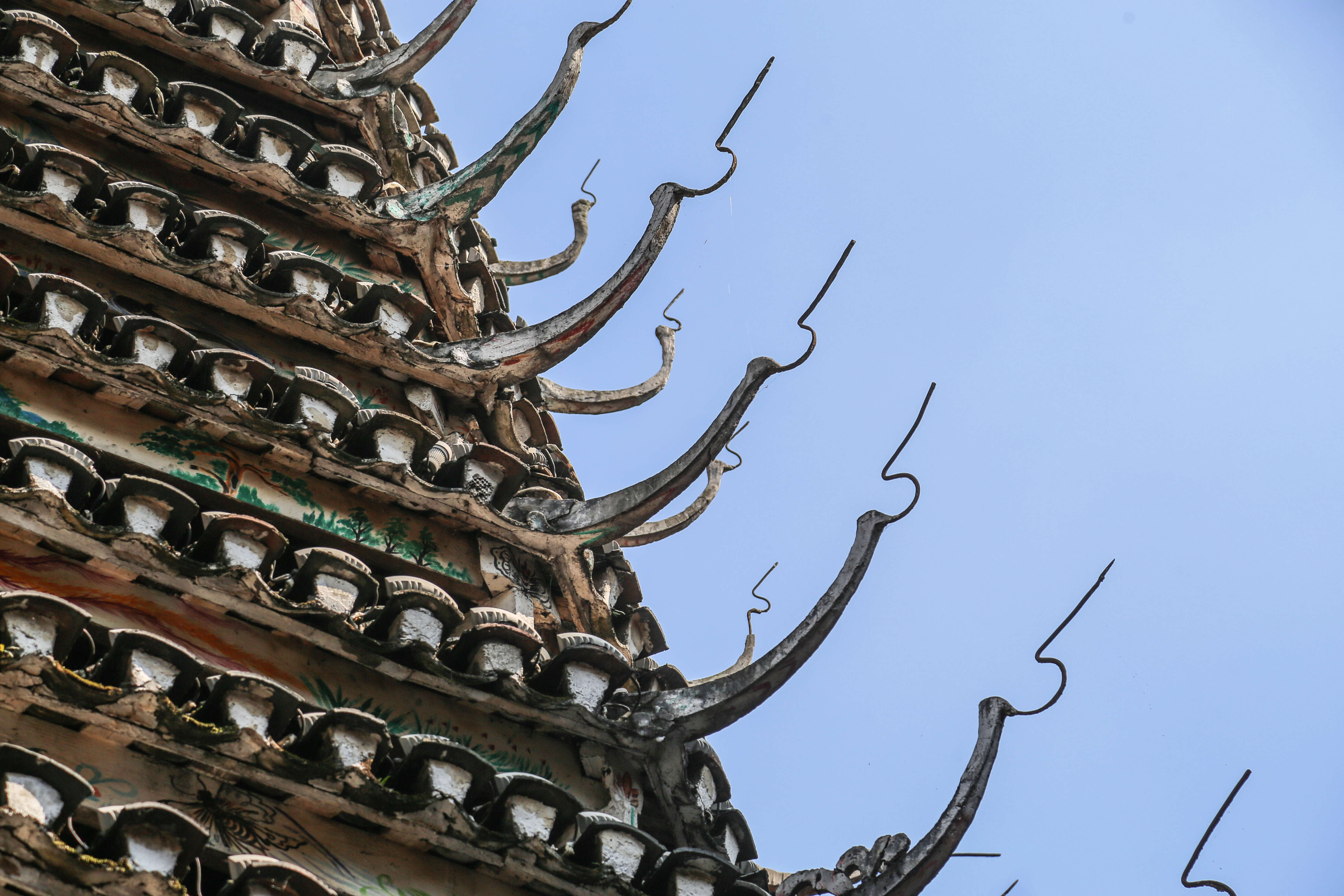
Even if they have a similar look, no Drum Tower is the same as another. They can vary in size, number of storeys, and richness of decorations: each Drum Tower is in fact built by a specific clan of the village, with the aim of showcasing the status and wealth of their clan. For this reason, in bigger villages like Zhaoxing or Huanggan, it is possible to find several Drum Towers, as the village was home to more than one clan. Outside and inside the Drum Towers are unique tridimensional decorations and paintings representing scenes of daily life, natural motifs, myths, legends or special celebrations of the Dong culture. In Zhaoxing village there are 5 Drum Towers, each of them dedicated to a specific virtue: benevolence, righteousness, wisdom, courtesy and faithfulness.
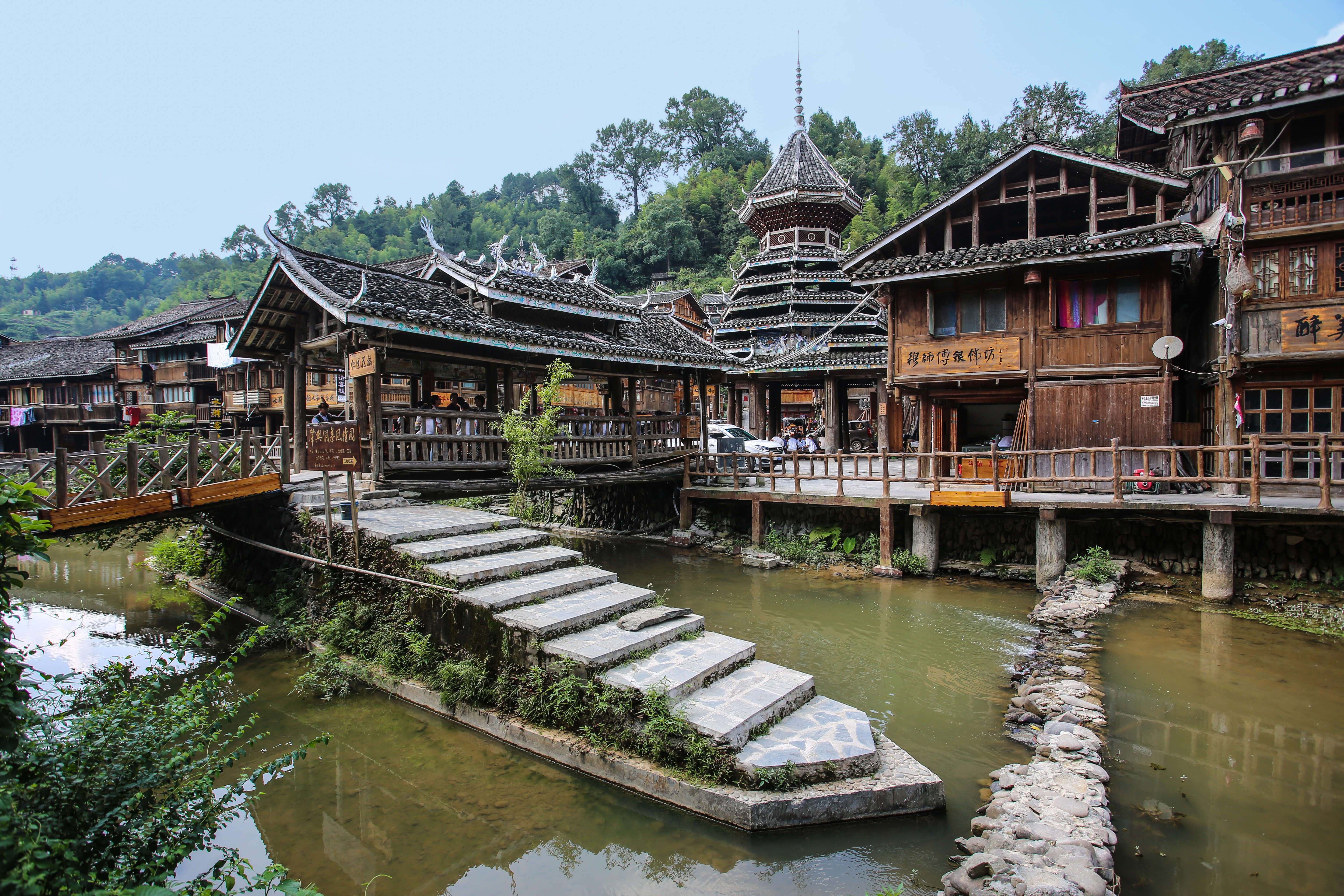
COVERED BRIDGES
Another important feature of Dong vernacular architecture is the covered bridges, also called ‘wind and rain bridges’.
In Dong culture, the bridge is not only a structure to cross rivers; it is also a sheltered place to rest, socialize and seek shelter from bad weather. Both sides of the railing host benches, protected by a shelter with a pavilion-like roof.
Similar to Drum Towers, covered bridges are joint together without the use of nails, and the beams and the interior structures are richly decorated with scenes of daily life and Dong mythology, animals, and natural elements such as fruits and flowers.
On top of the roof, there are sculpted dragons, phoenixes or cranes, and other auspicious creatures in Chinese culture.



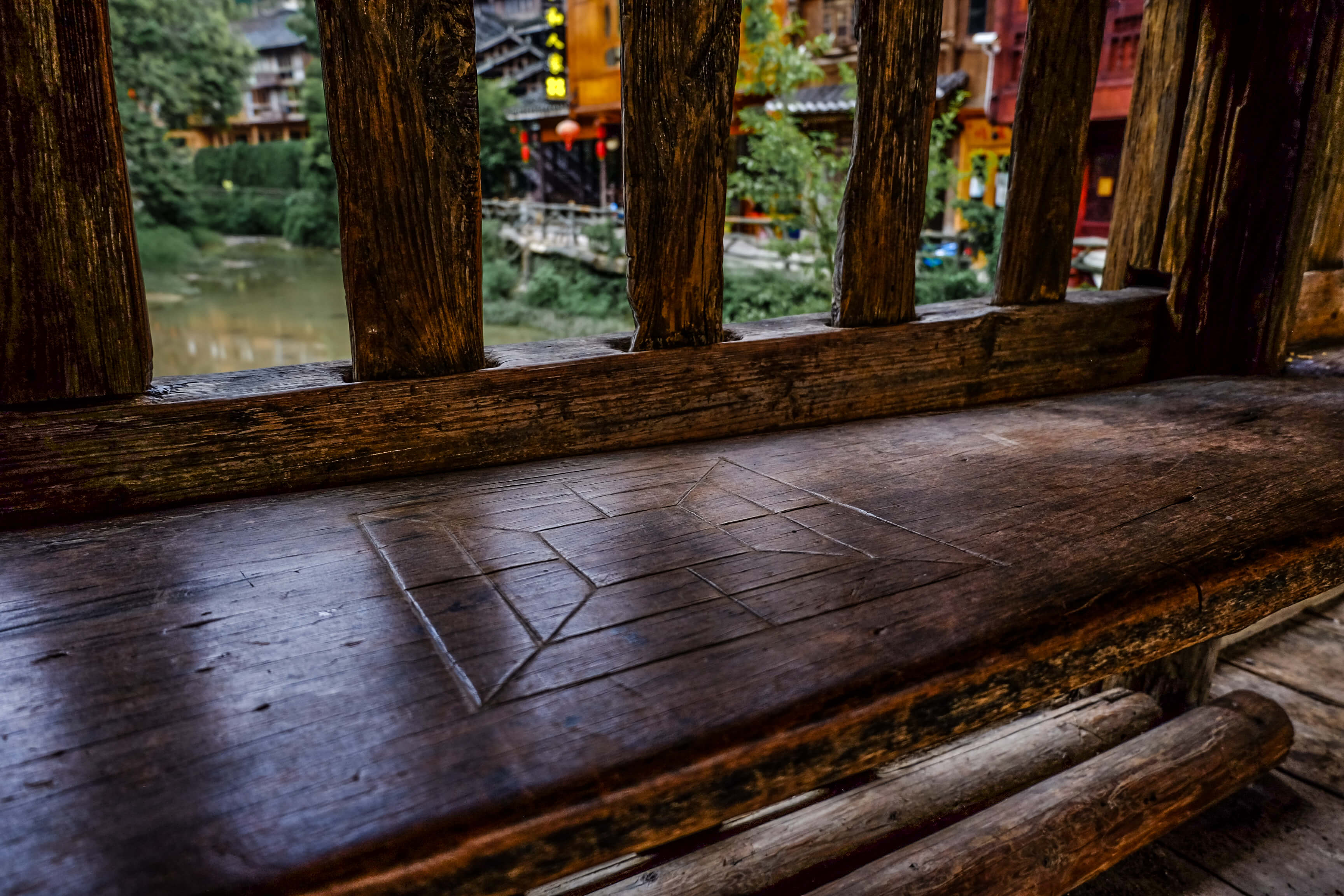

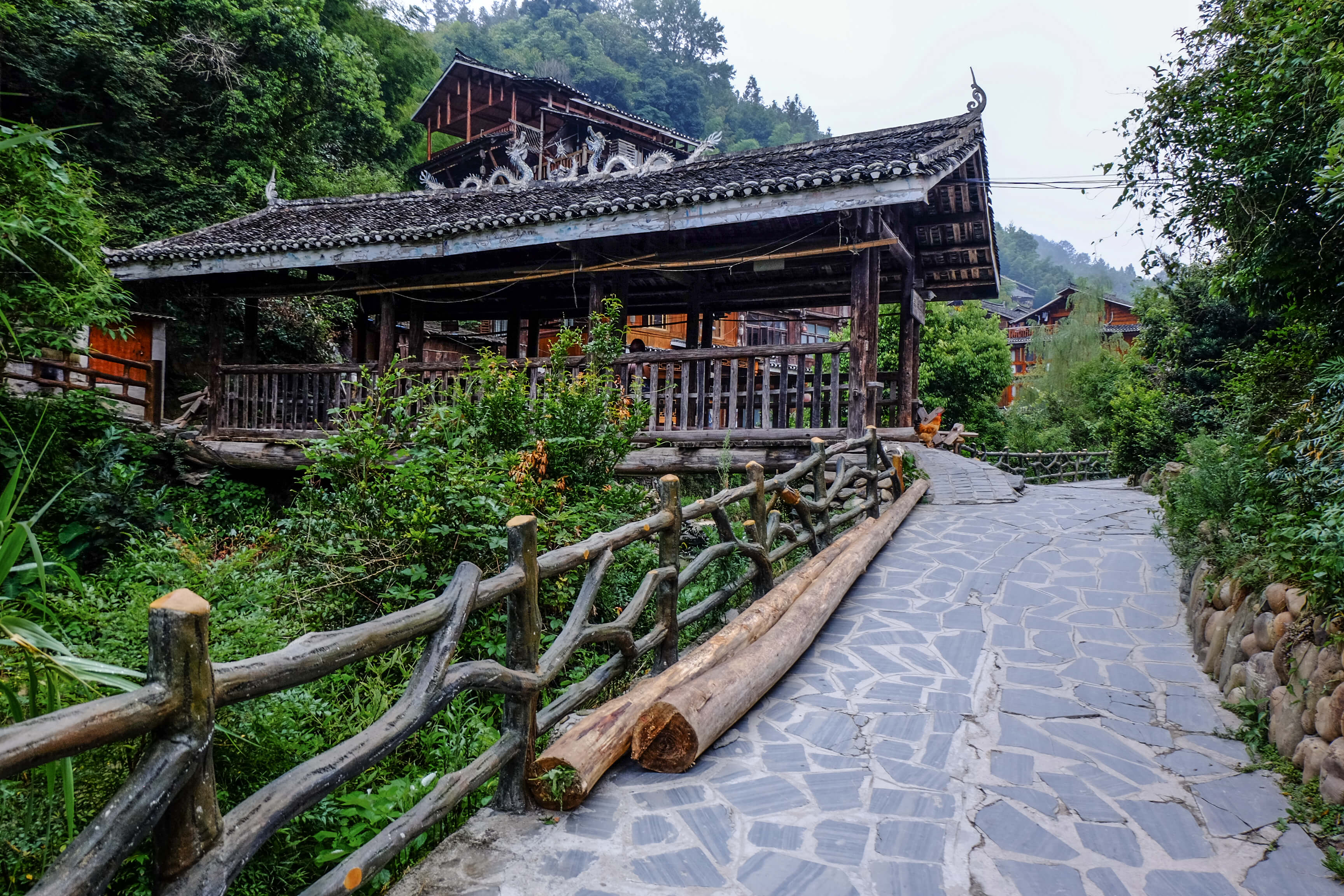
EXPLORING ZHAOXING DONG VILLAGE
The time I spent at Zhaoxing was some of the most enjoyable of my entire trip to Guizhou Province.
The village is still mainly inhabited by the locals (above all the elderly), busy in their daily chores, almost careless of the tourists who wander around the alleys. Old men gather under the drum towers. Some are playing board games, while others are wood-working, making lushengs (wind instrument made of multiple bamboo pipes).


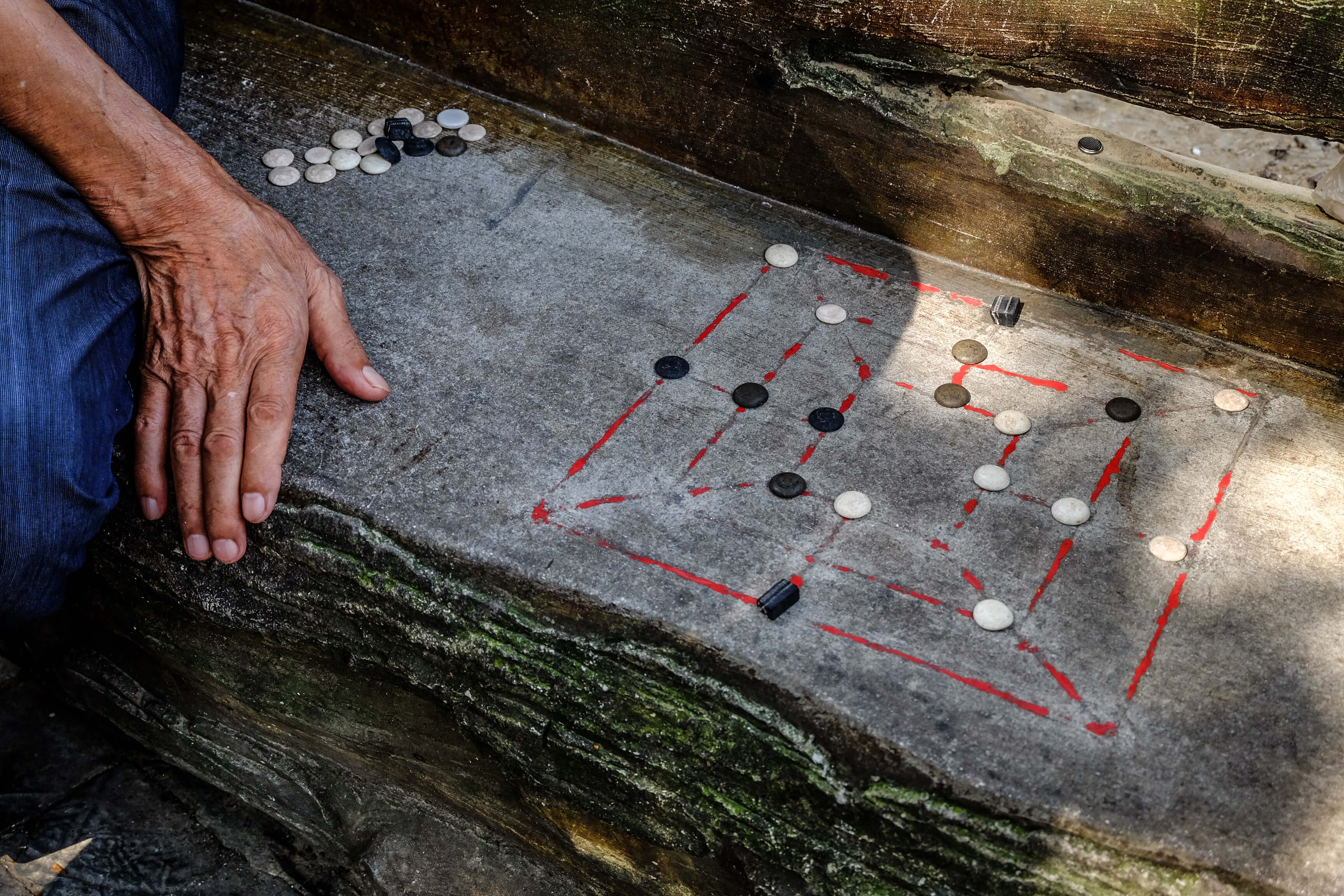
There are many shops and banquets selling souvenirs and beautiful local artisan products, especially fabrics (indigo batiks and purple fabrics unique to Guizhou). Old ladies everywhere sell their own embroidered fabrics and it is impossible to leave empty handed!




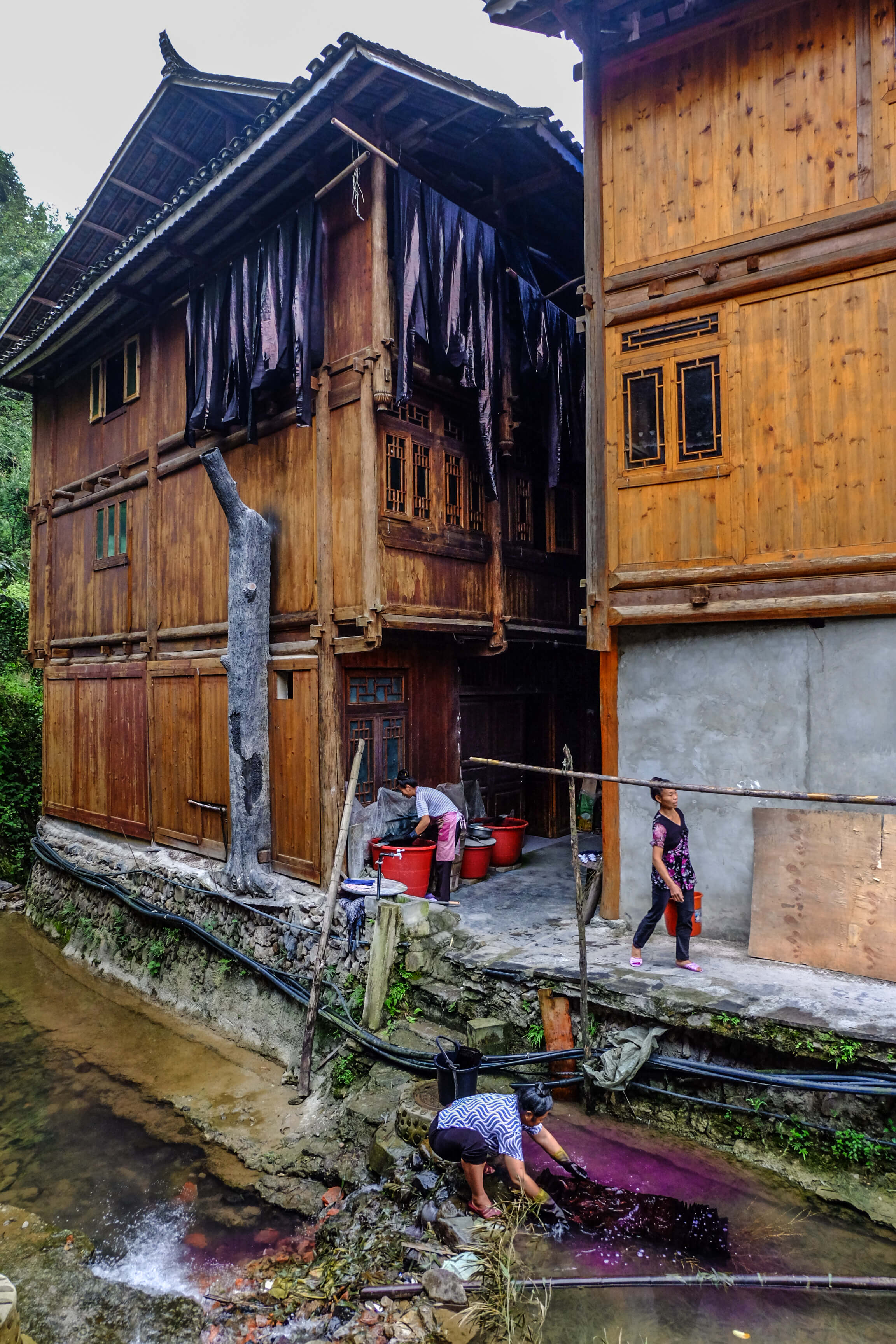

In the evening, the main street of the village comes alive. Dozens of street food stalls and barbecue places offer their tasty and affordable cuisines.
Early in the morning on the same street, vendors display their fresh products.
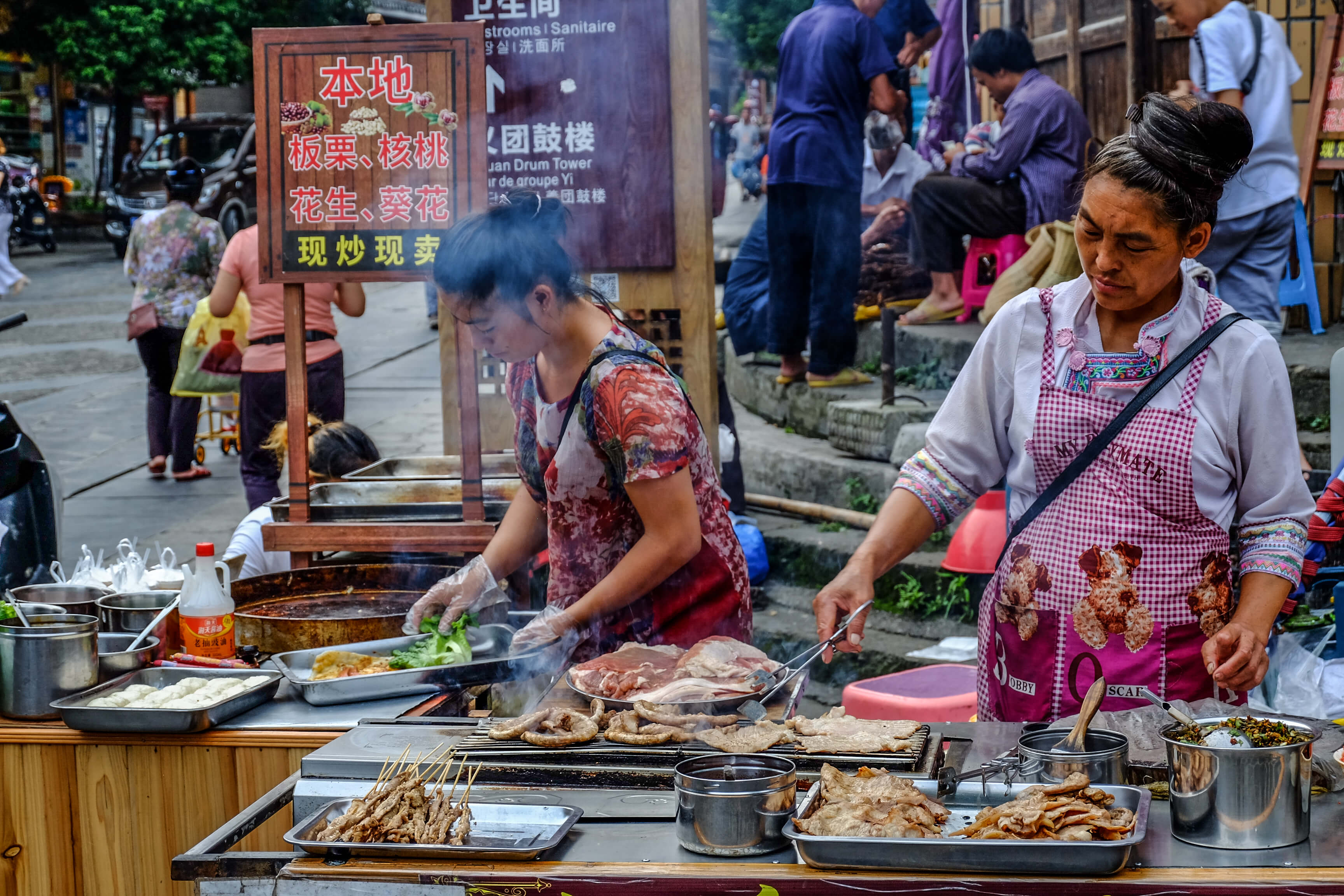


The village is rather big (it hosts around 800 dwellings), but it can be walked in half a day.
The vernacular architecture is very well kept and constantly in use, offering great photographic opportunities. For a great panorama, I suggest a hike up to the panoramic view point in front of the village!
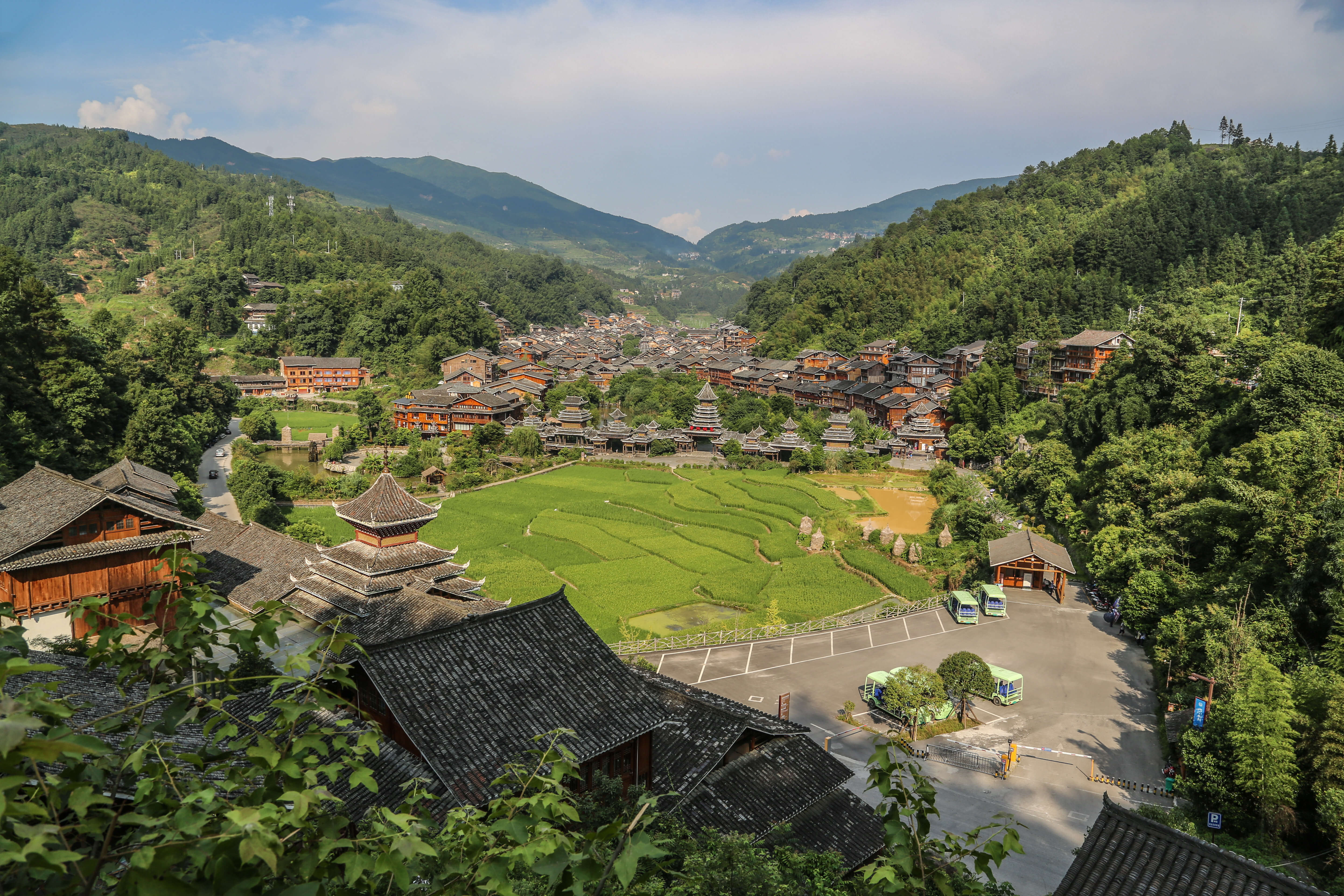

Although an entrance ticket is required (70 rmb), Zhaoxing retains its quaint charm.
Before arriving in Zhaoxing, I spent 2 days in Xijiang Qianhu Miao village in the same province, and was traumatized by the mass tourism and cheesy exploitation of the Miao culture… So I was really worried to find a similar theme park situation in Zhaoxing, but the two villages are really not comparable for number of visitors, tourist exploitation, and livability (at least for the moment).
I could tell from the number of guesthouses and local souvenir shops that Zhaoxing is clearly aiming to become a larger tourist destination, but it’s not there yet.

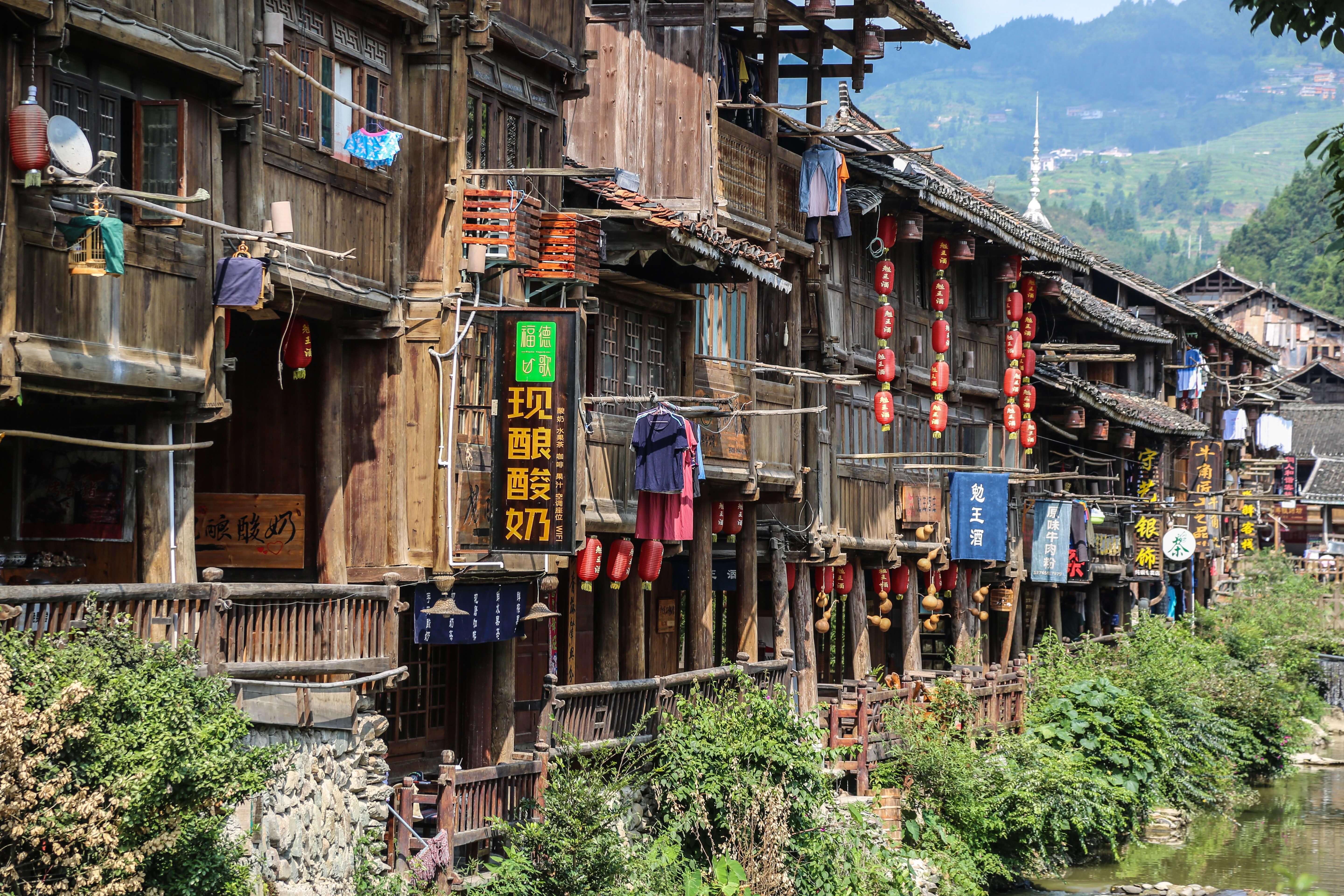
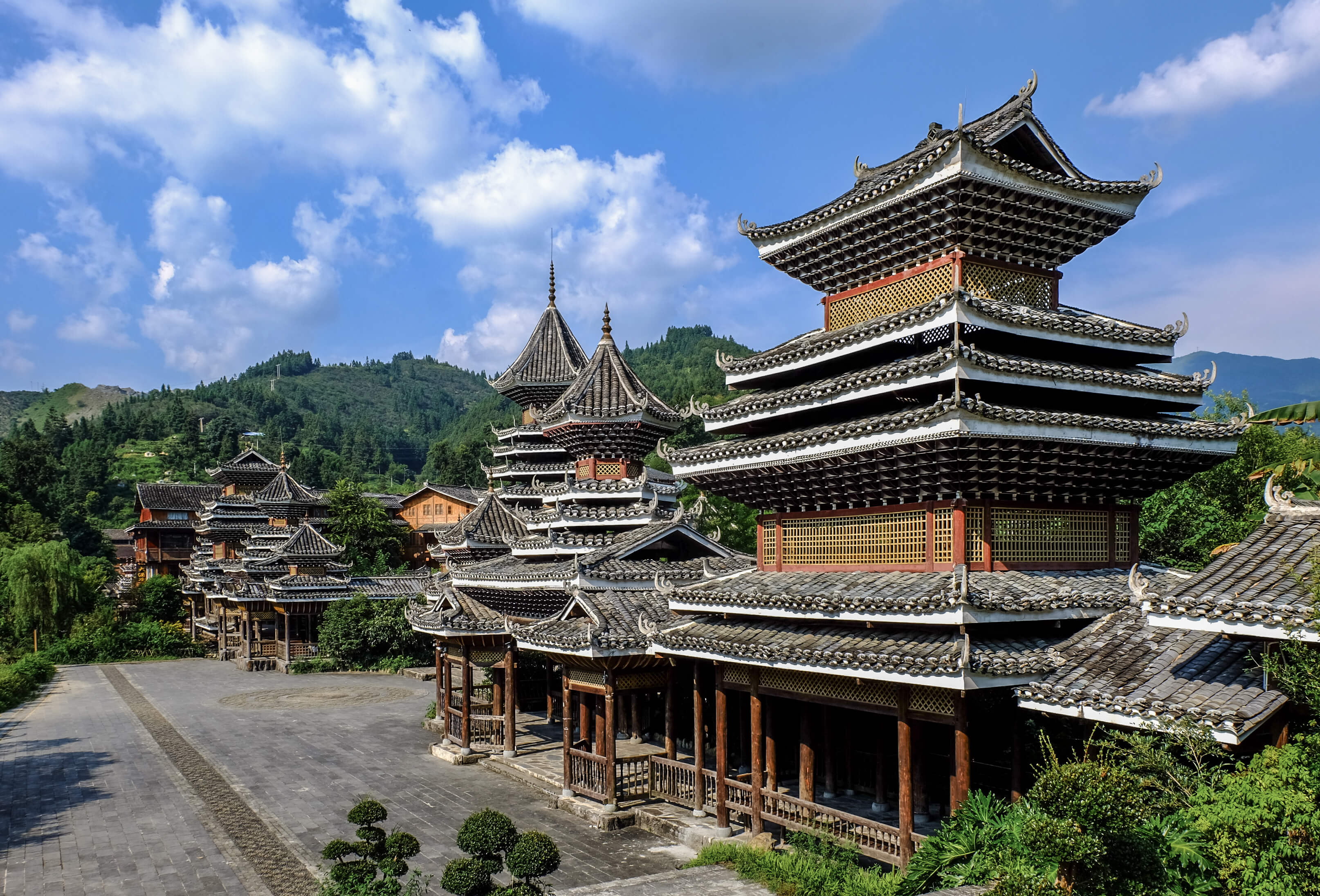
The entrance to the village is very similar to that of Xijiang. A huge fancy ticket office and a plaza with gigantic Dong decorations … When I arrived it was completely empty and I was basically the only visitor around.
In the center of the village it is possible to find a stage for cultural performances, although at the time of my visit (August 2019) it was not in use.
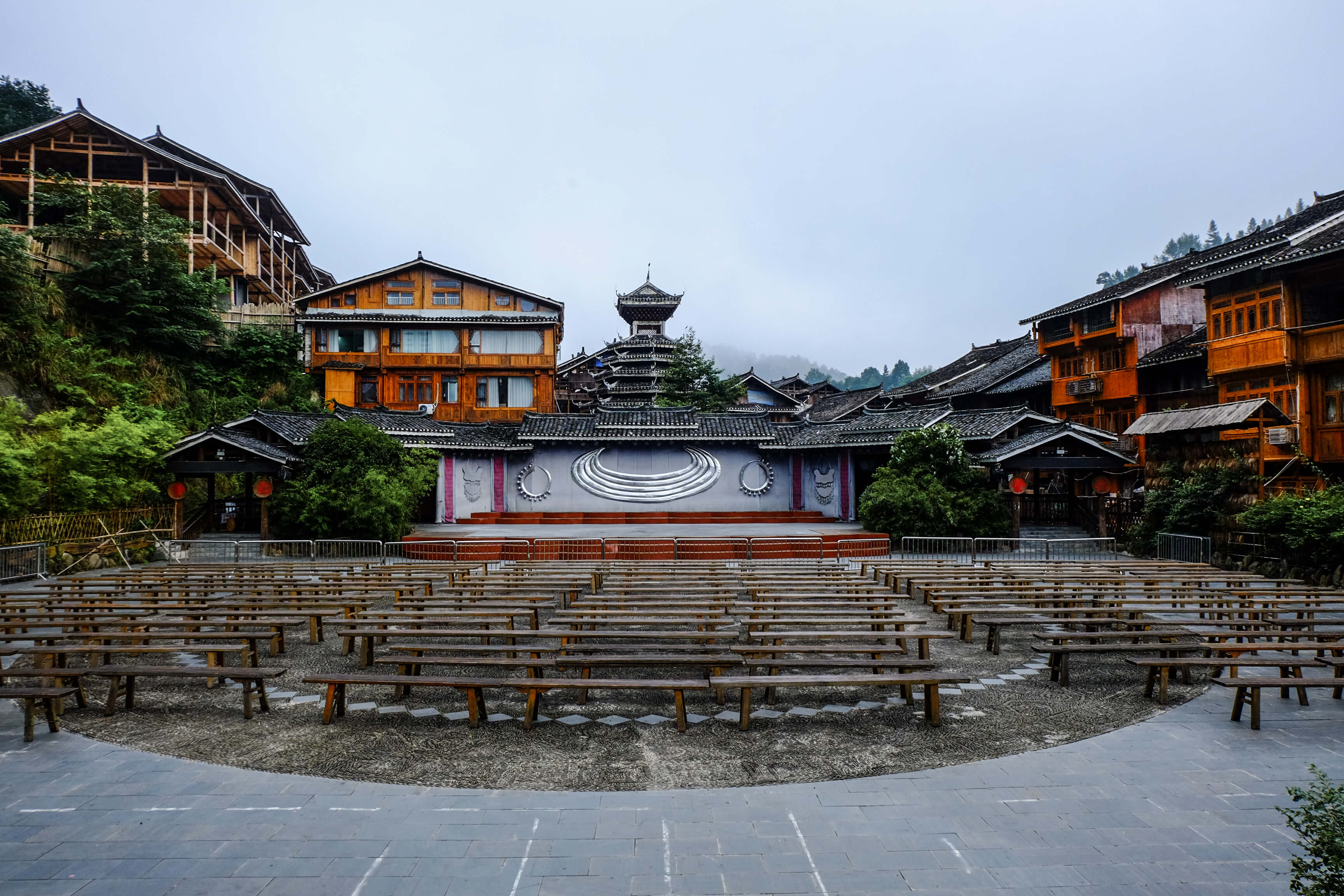
At various times of the day, groups of musicians wearing traditional costumes gather under one of the various drum towers and stage a show with Dong music and songs. I saw similar musical performances many times in the same day, always at different locations. I couldn’t tell if these were designed for tourists or to keep local traditions alive. Given the small number of tourists around the village, the situation felt a lot more spontaneous, and enjoyed by both visitors and the locals hanging around.

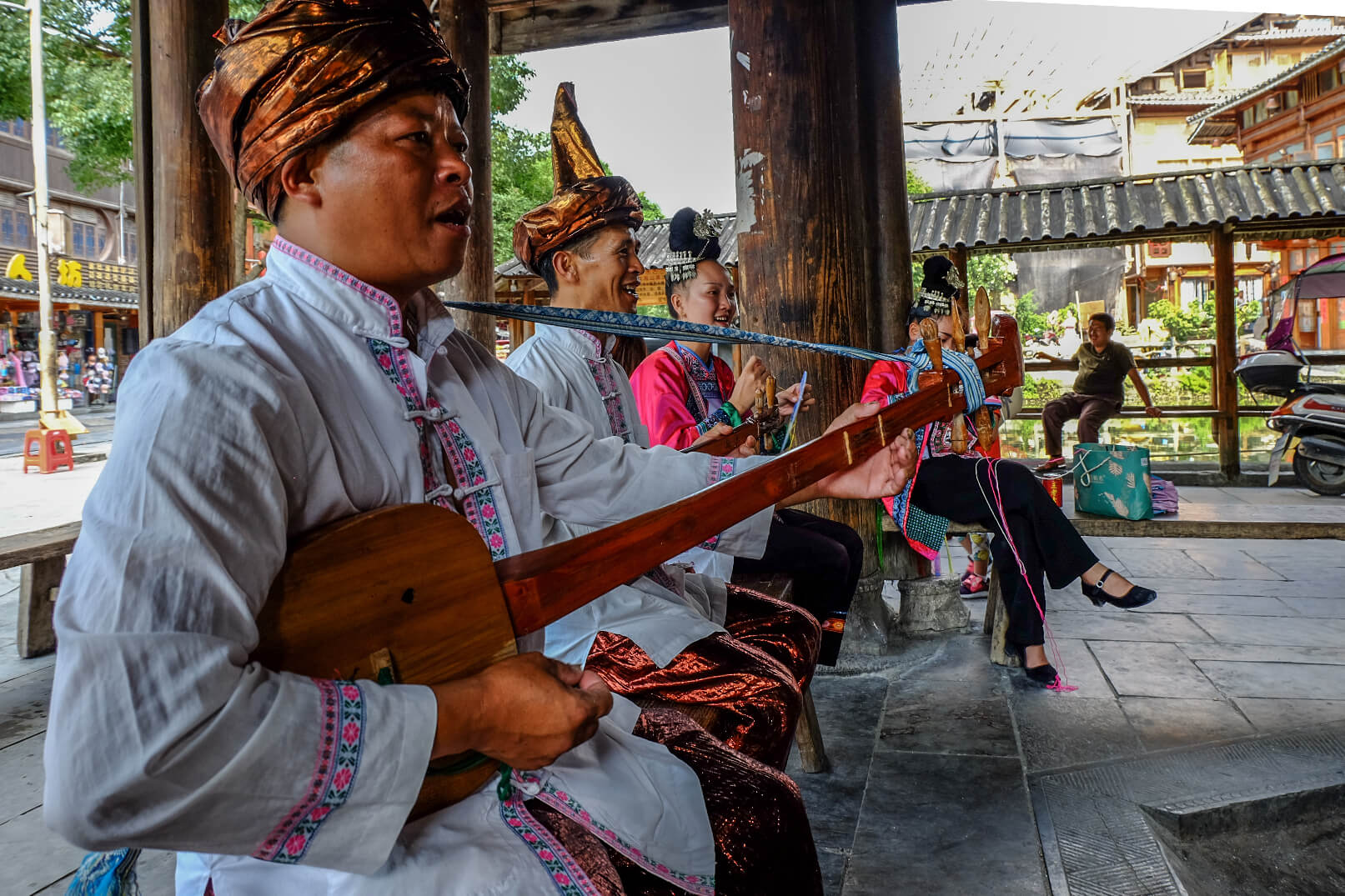
WHAT TO SEE AROUND ZHAOXING
TANG’AN VILLAGE AND RICE TERRACES 堂安村
One of the most popular excursions from Zhaoxing village is to the Tang’An village and rice paddies, which can be done in half a day.
The Dong village of Tang’an is perched on hillside terraces 8km from Zhaoxing, and can be reached with a short car ride or 2h hike between the rice terraces (depending on your hiking speed).
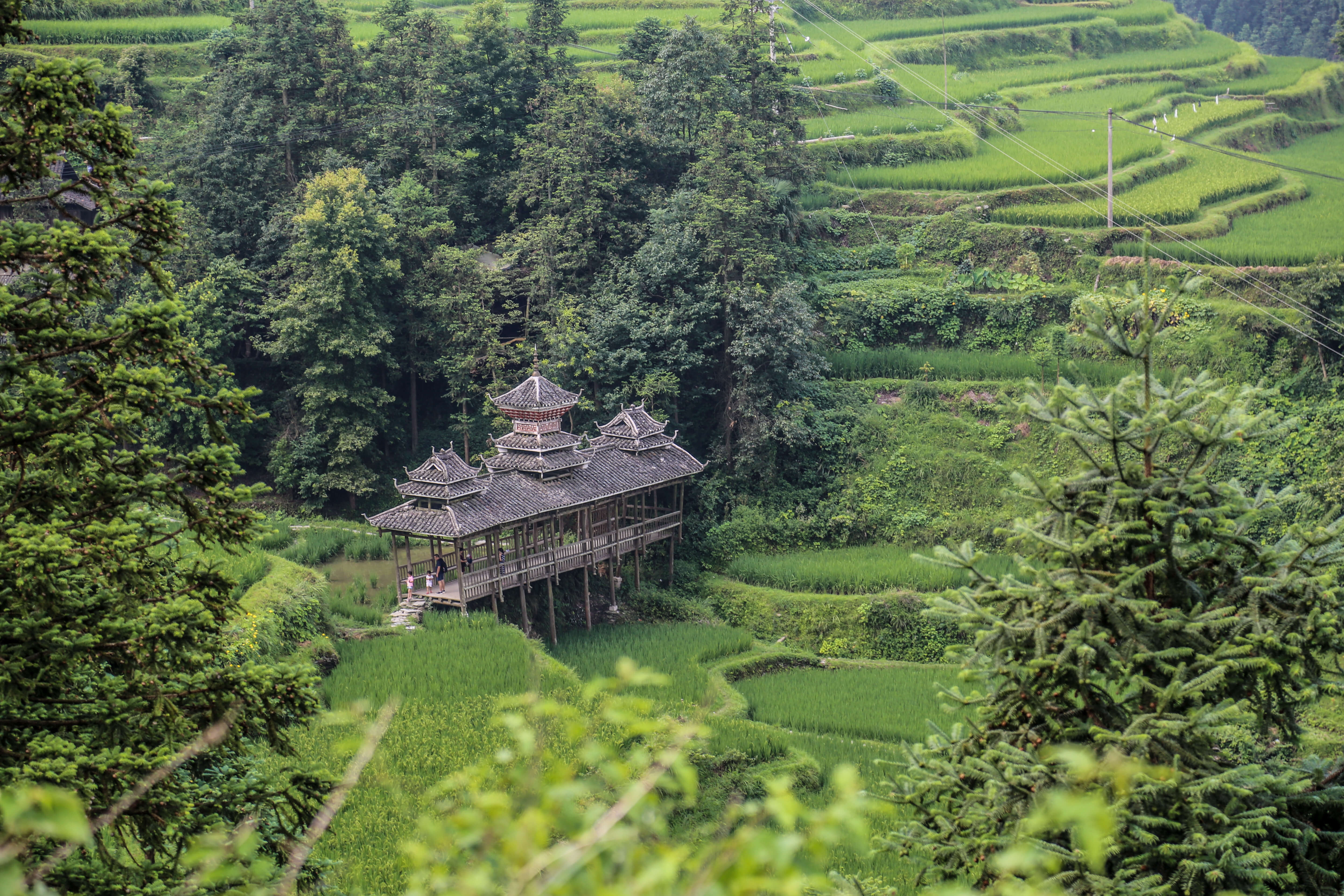
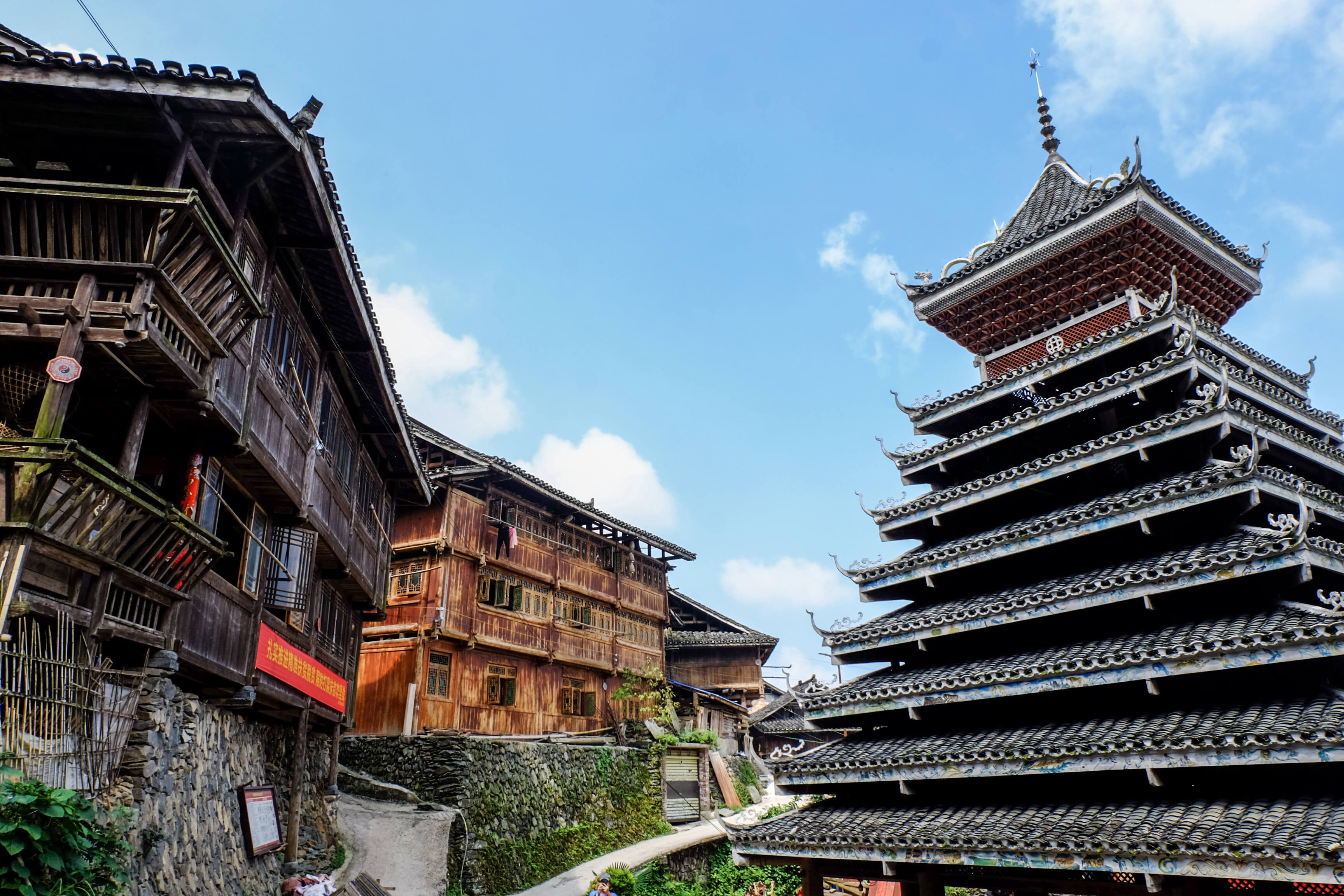
While I believe that Tang’An village is nothing special compared to Zhaoxing, the landscape around it is quite beautiful and worth the visit.
In Tang’An there is also an interesting Eco Museum about the local Dong culture, which I personally found very interesting and enjoyable in its simplicity.
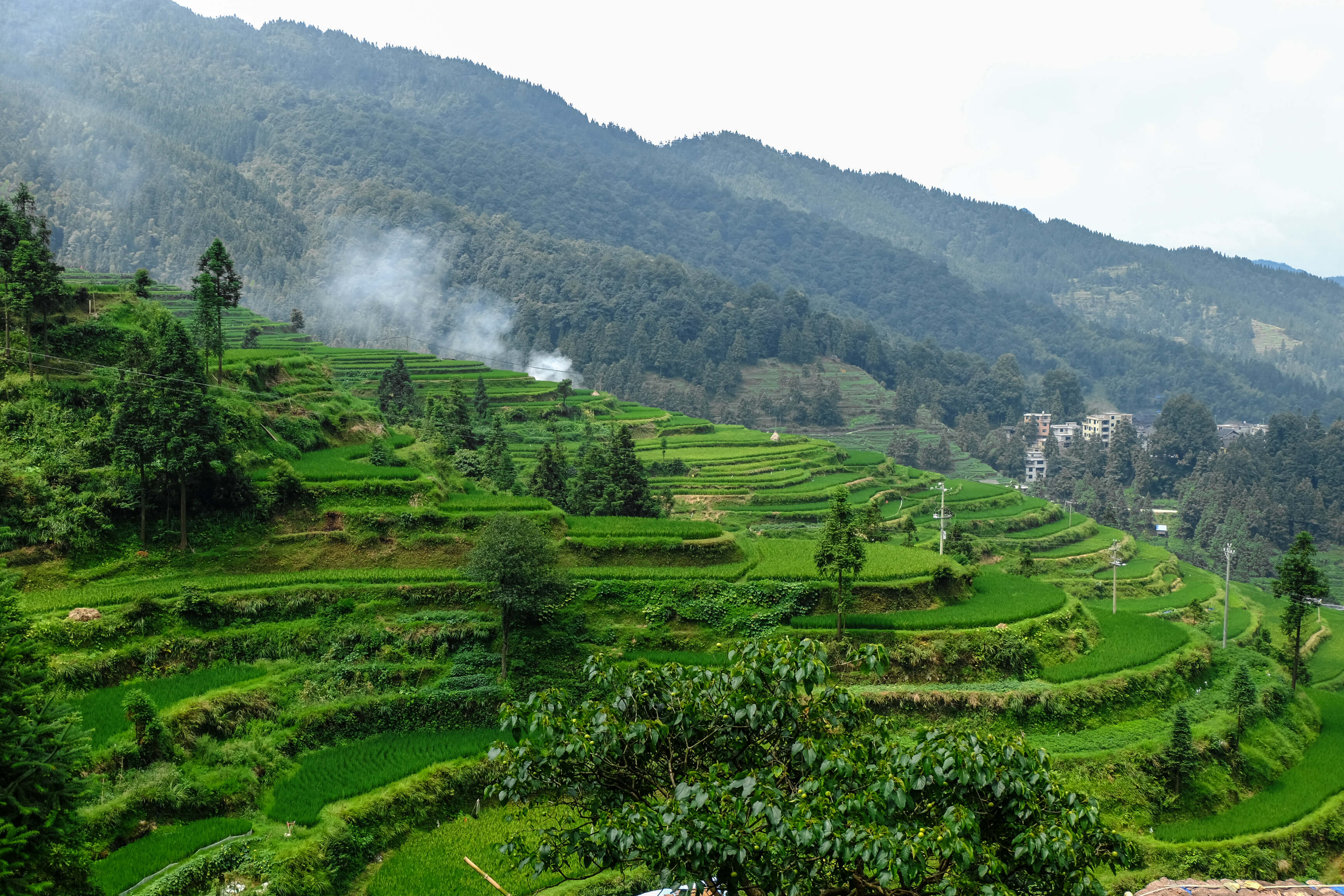
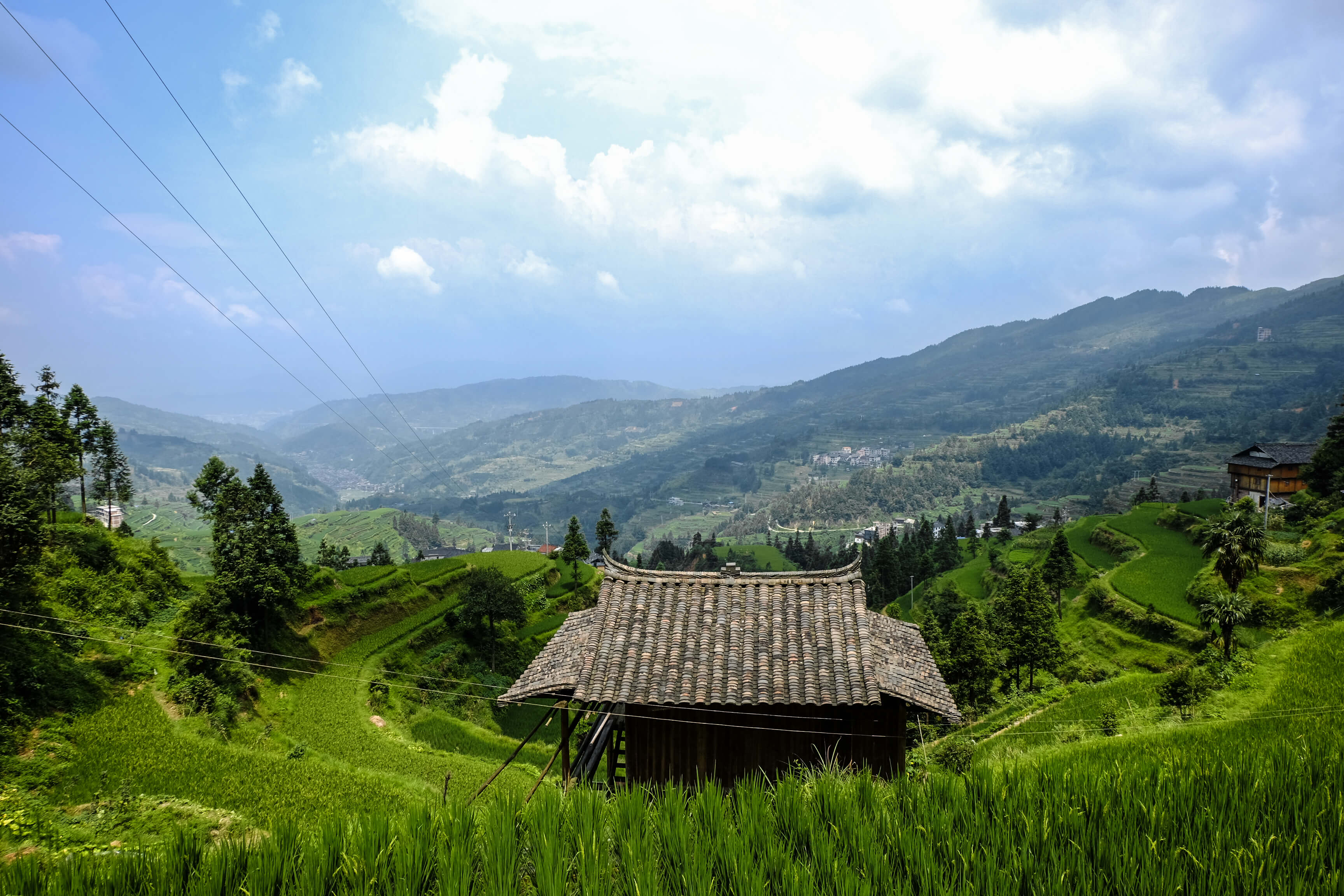
BASHA MIAO VILLAGE 岜沙苗寨
Located 40km from Zhaoxing, remotely nested for centuries between hills and forests, the village of Basha is a unique of its kind.
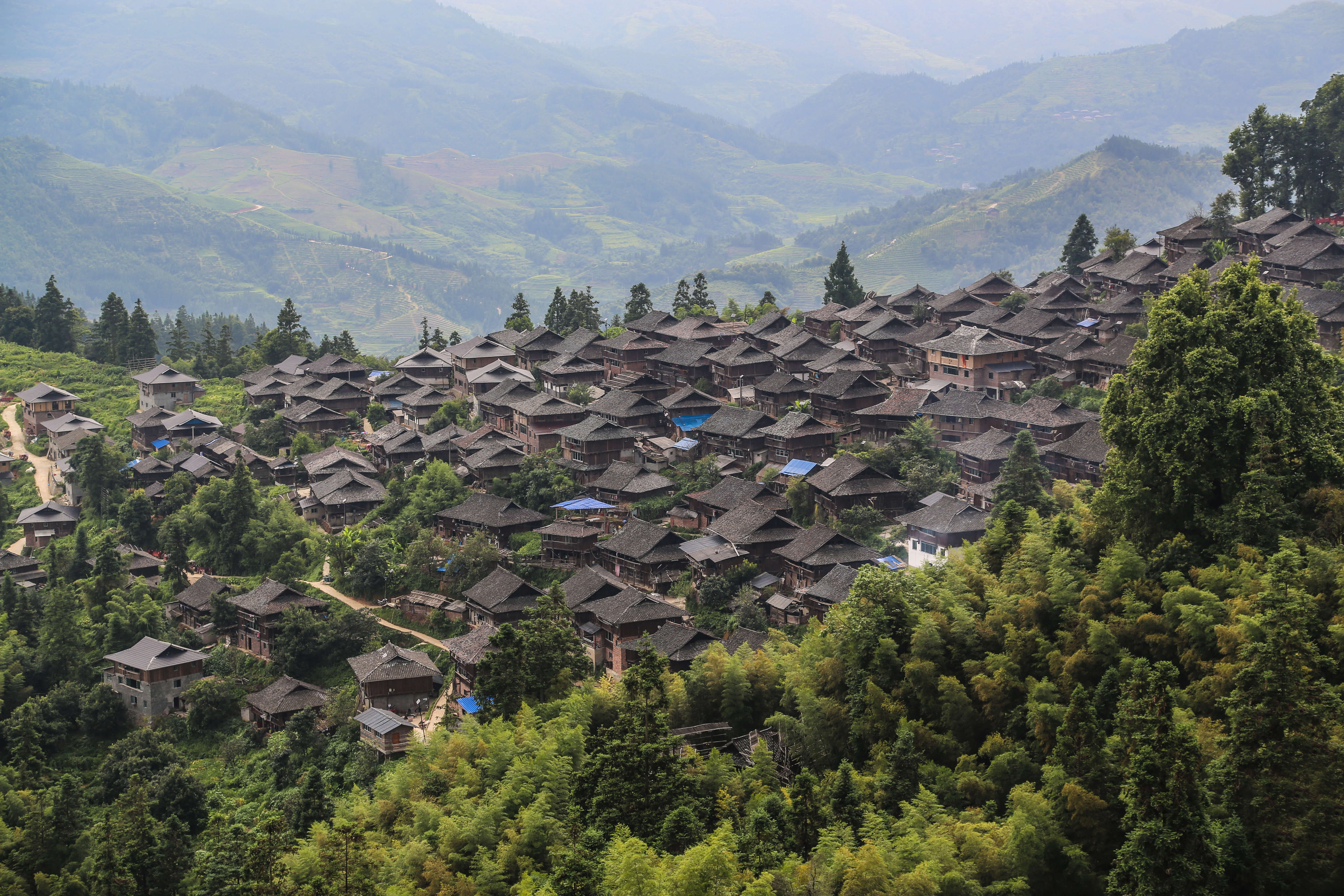
It hosts the Basha Miao tribe, the last recognized gun men of China, who have very special costumes, cultural practices and vernacular architecture.
Because of it’s uniqueness, Basha has been turned into a tourist destination, which means you need to pay a ticket to access the village (70 rmb) and the villagers will have daily cultural performances with music and dances (in line with the trend going on in all these ethnic minority villages).

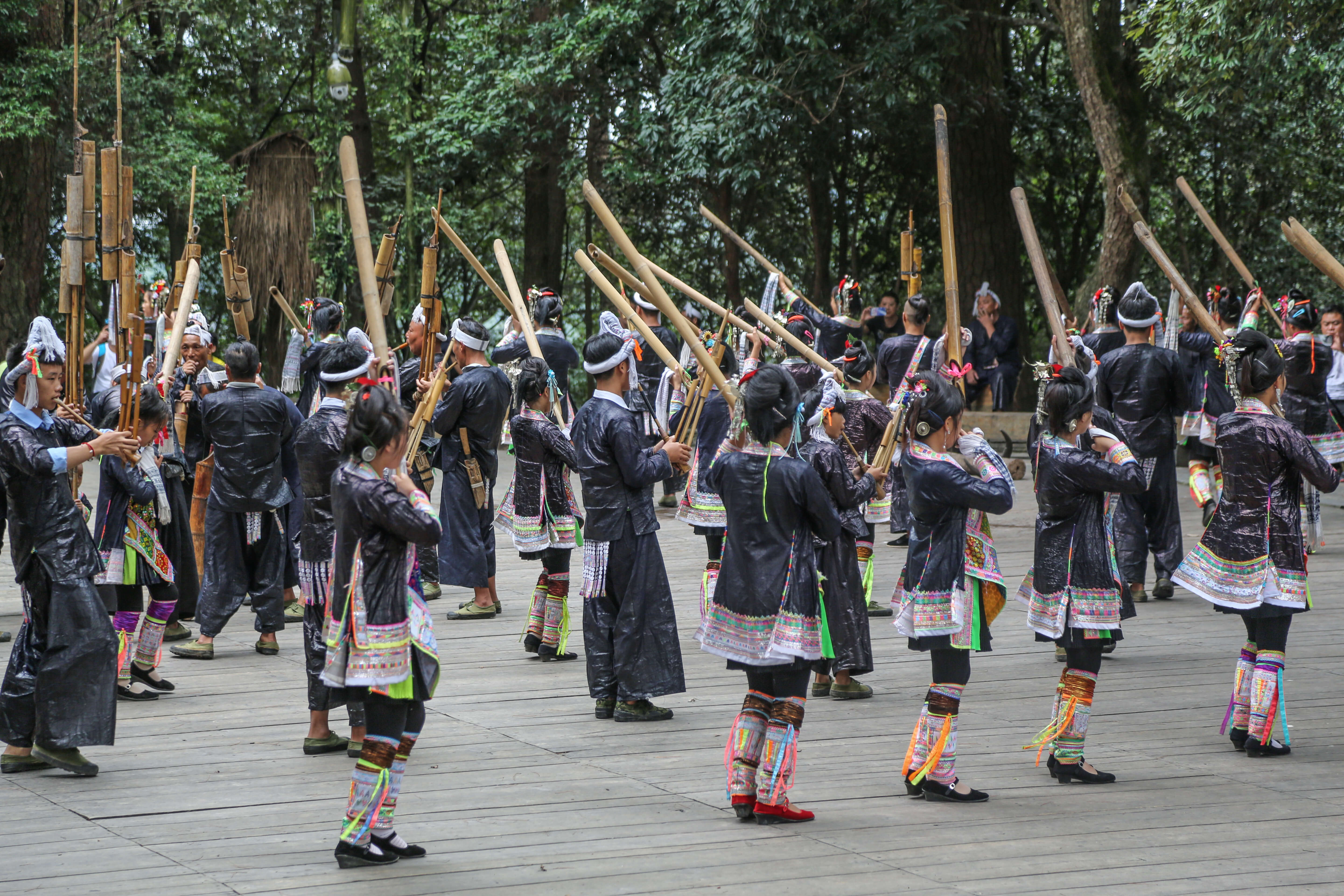
Even if a bit touristy, I enjoyed the half day excursion to Basha, really appreciating the way this tribe has been carrying on its distinctive cultural heritage for centuries.
(read more about my visit to Basha village here)
HUANGGANG DONG VILLAGE 黄岗村
Located 1h drive from ZhaoXing, the village of Huanggan is a beautiful example of living Dong village, completely untouched by tourism.
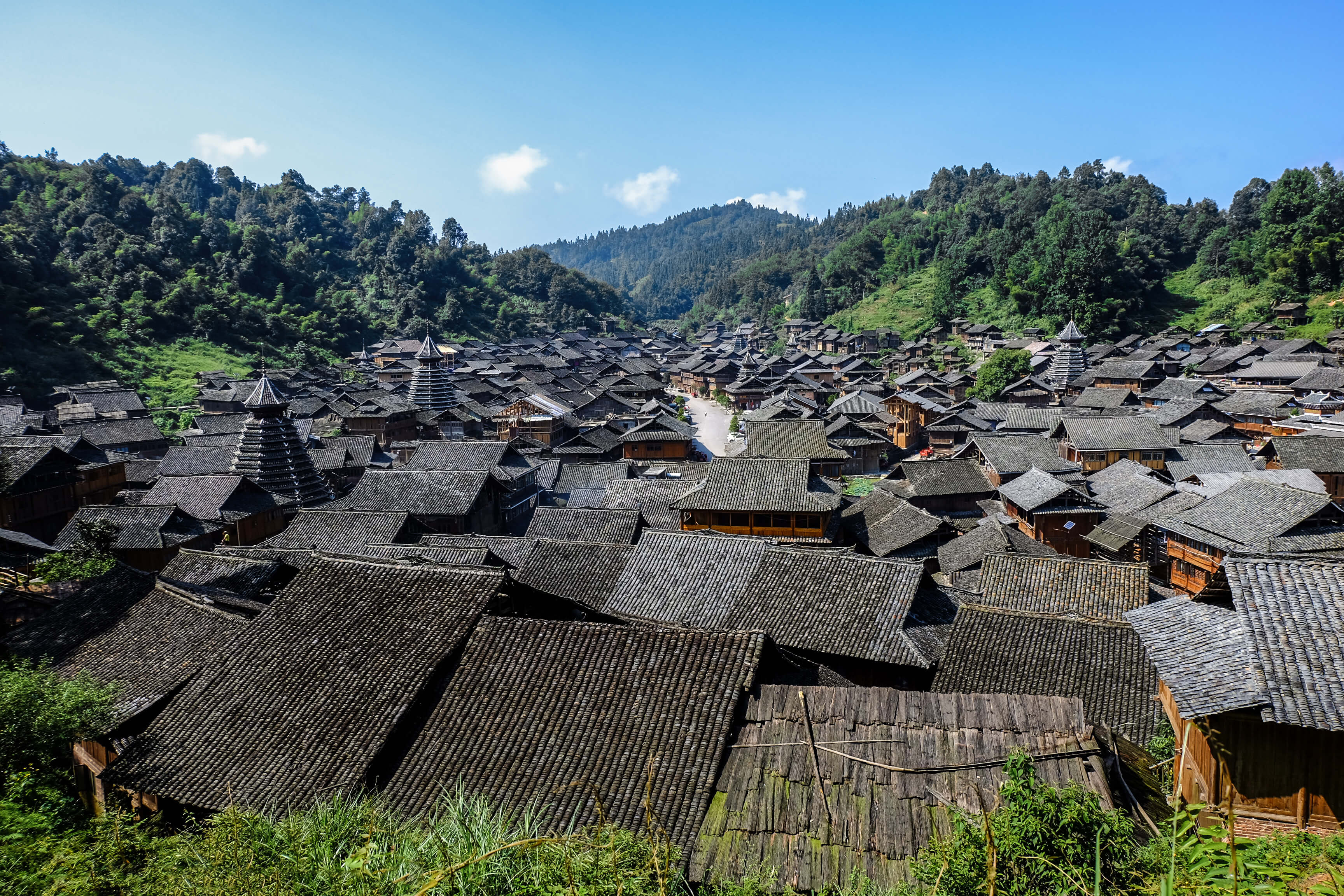
Huanggan it’s a great place to experience the real life of the Dong minority. It’s remoteness and difficult access keep the village and its lifestyle authentic and unspoiled.
Don’t expect to find shops, restaurants, or anything really for tourists there!
(find out more about Huanggang village here)

HOW TO GO TO ZHAOXING
Today getting to Zhaoxing is really easy thanks to the High-Speed Railway Station which is only 10 minutes by taxi from the entrance of the village. Even if it stops right next to Zhaoxing, the station takes the name of Congjiang Station – 从江站, not to be confused with the Congjiang County 从江县, which is actually 40 km away.
To visit Zhaoxing, you need to buy a ticket valid for 4 days at the price of 70 rmb.
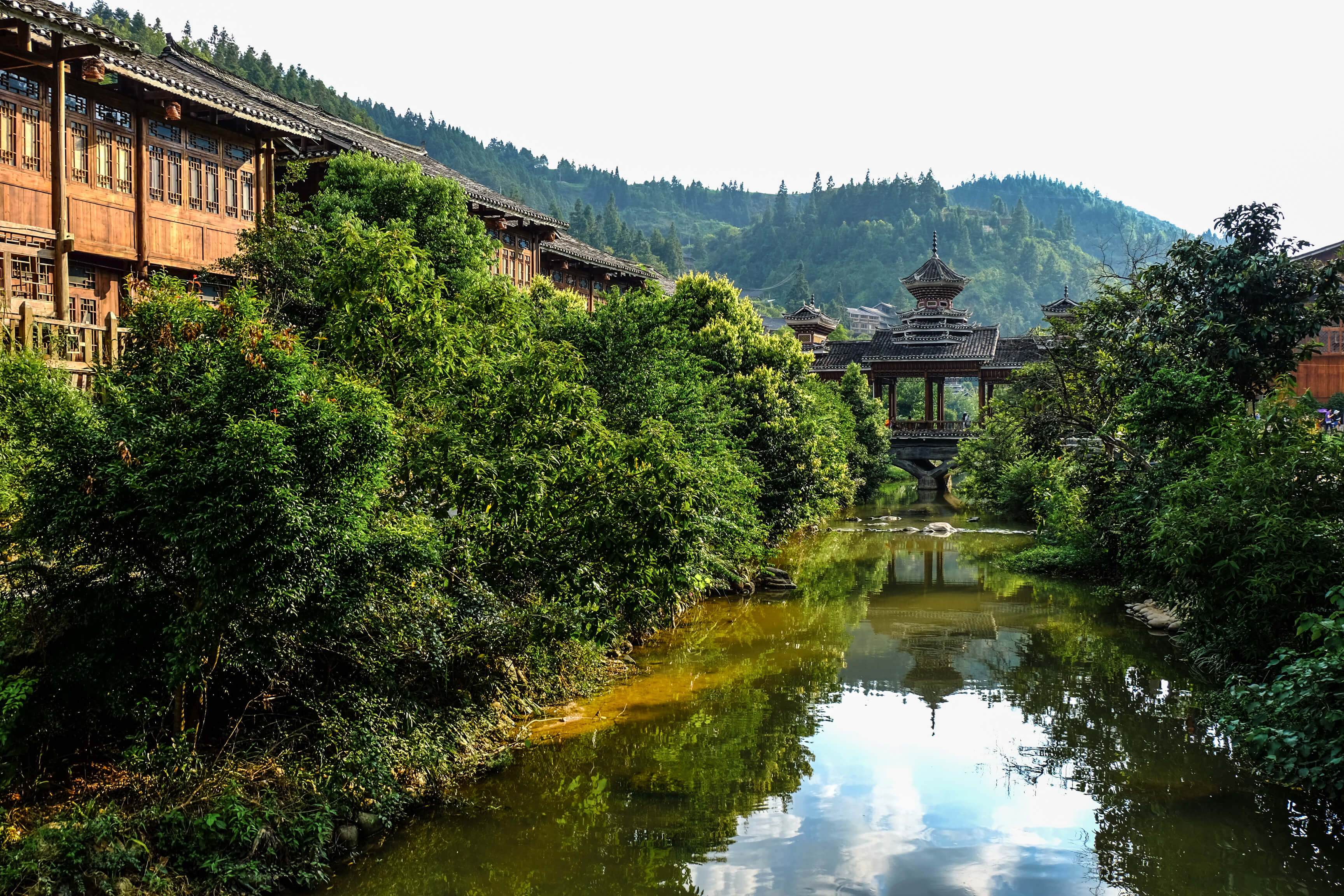
IS TRAVELING TO ZHAOXING WORTH IT? MY OPINION
I was personally thrilled with my visit to the Dong minority. Zhaoxing at the moment represent a balanced medium between cultural tourist destination and authentic traditional village, and it is a great base to explore the unique destinations that the Qiandongnian area has to offer.
It must be said that Zhaoxing is slowly opening up to tourism, as can be seen by numerous commercial activities and hotels, and the new High-speed Railway Station is just few km far. But for now it retains an authentic and enjoyable charm.
I therefore highly recommend visiting Zhaoxing before it get spoiled by mass tourism development in the way of so many other traditional Chinese villages … with the hope that this will never happen.
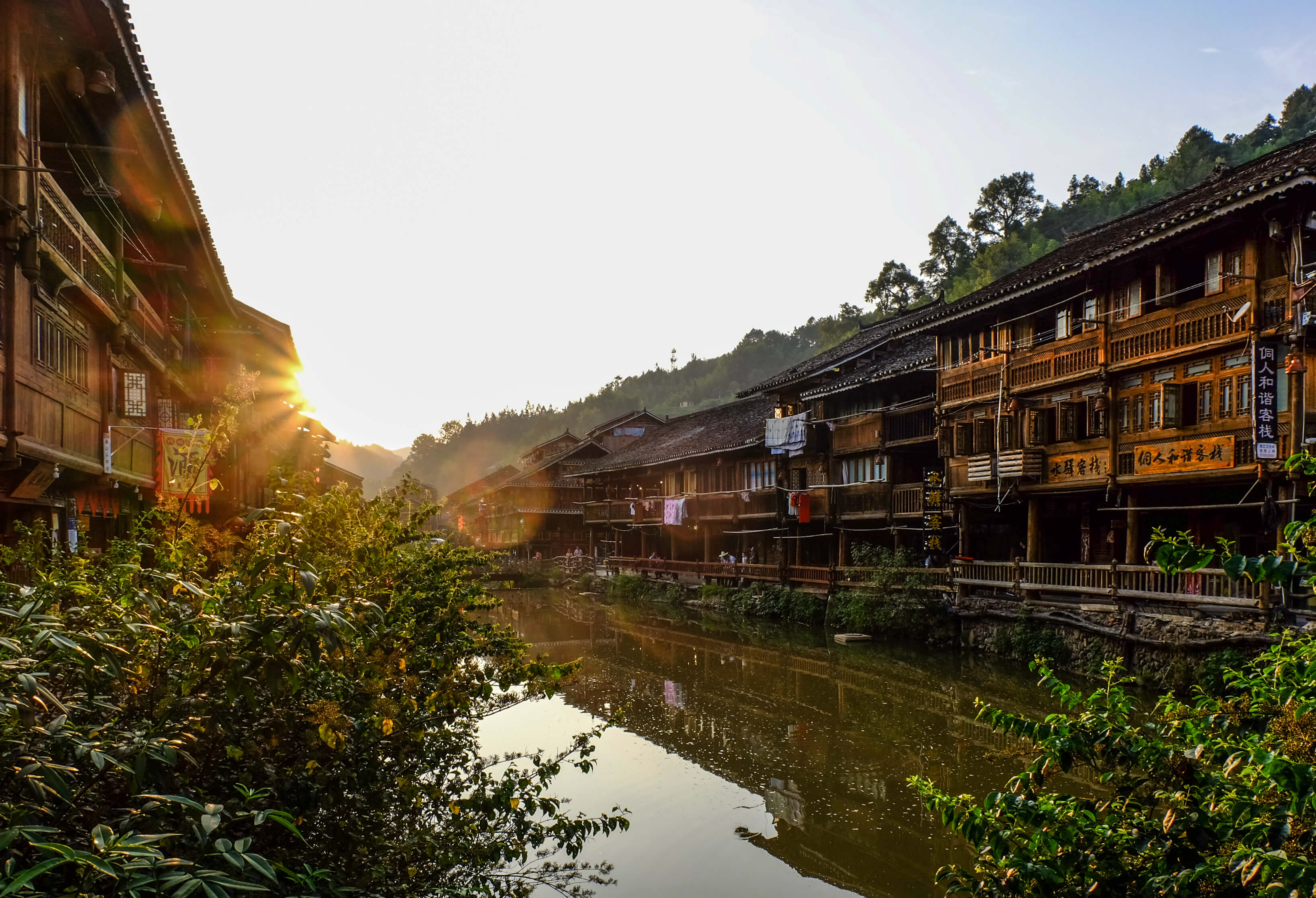
Pin it on Pinterest!
IF YOU FOUND THIS POST INTERESTING AND INSPIRING, HELP ME TO SHARE IT WITH OTHER TRAVELERS!
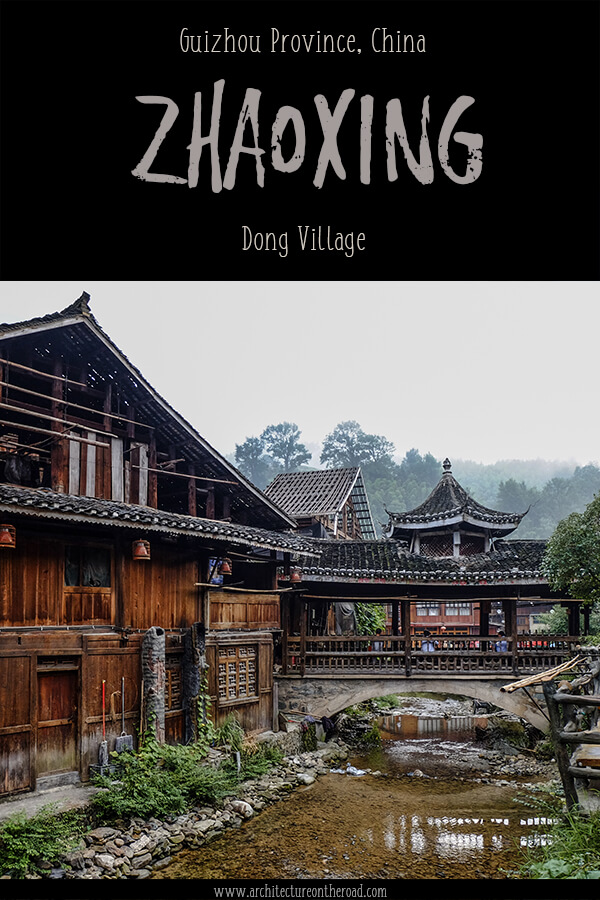
FRom the same province
stay tuned !
search for a destination
latest travel itineraries
latest CHINA articles
Text and pictures by
Architecture on the Road ©
Architecture on the Road
All rights reserved
All photographs on this site were taken and are owned by me (unless credited otherwise).
If you would like to use some of these photos for editorial or commercial purposes, many of these are available on Shutterstock (click the link below). Otherwise, please contact me on Instagram, Facebook, or by email.
Do not use my pictures without my written consent. Thank you!
